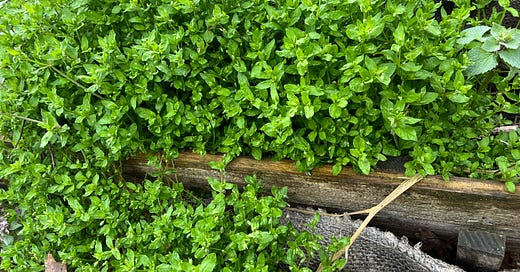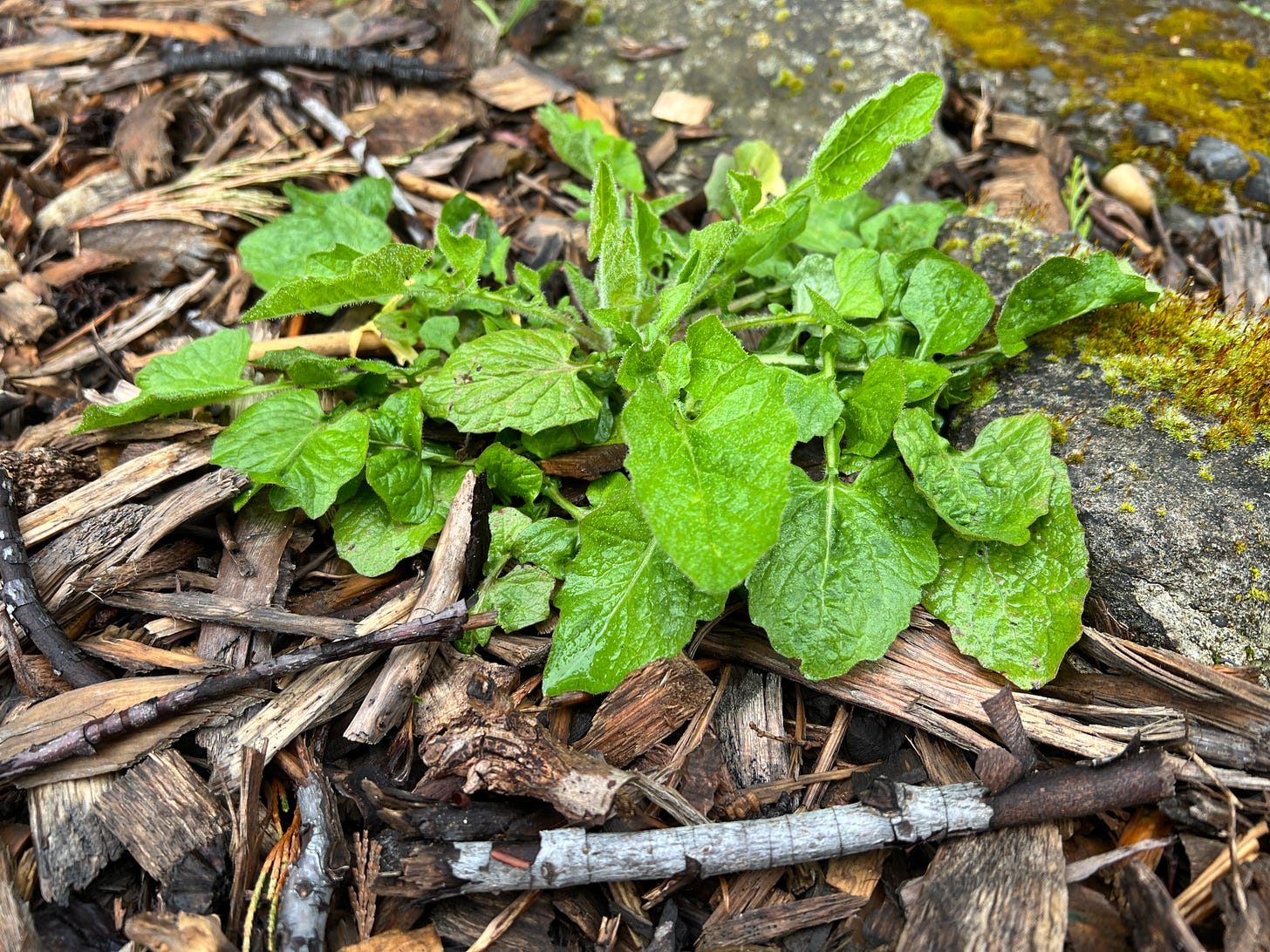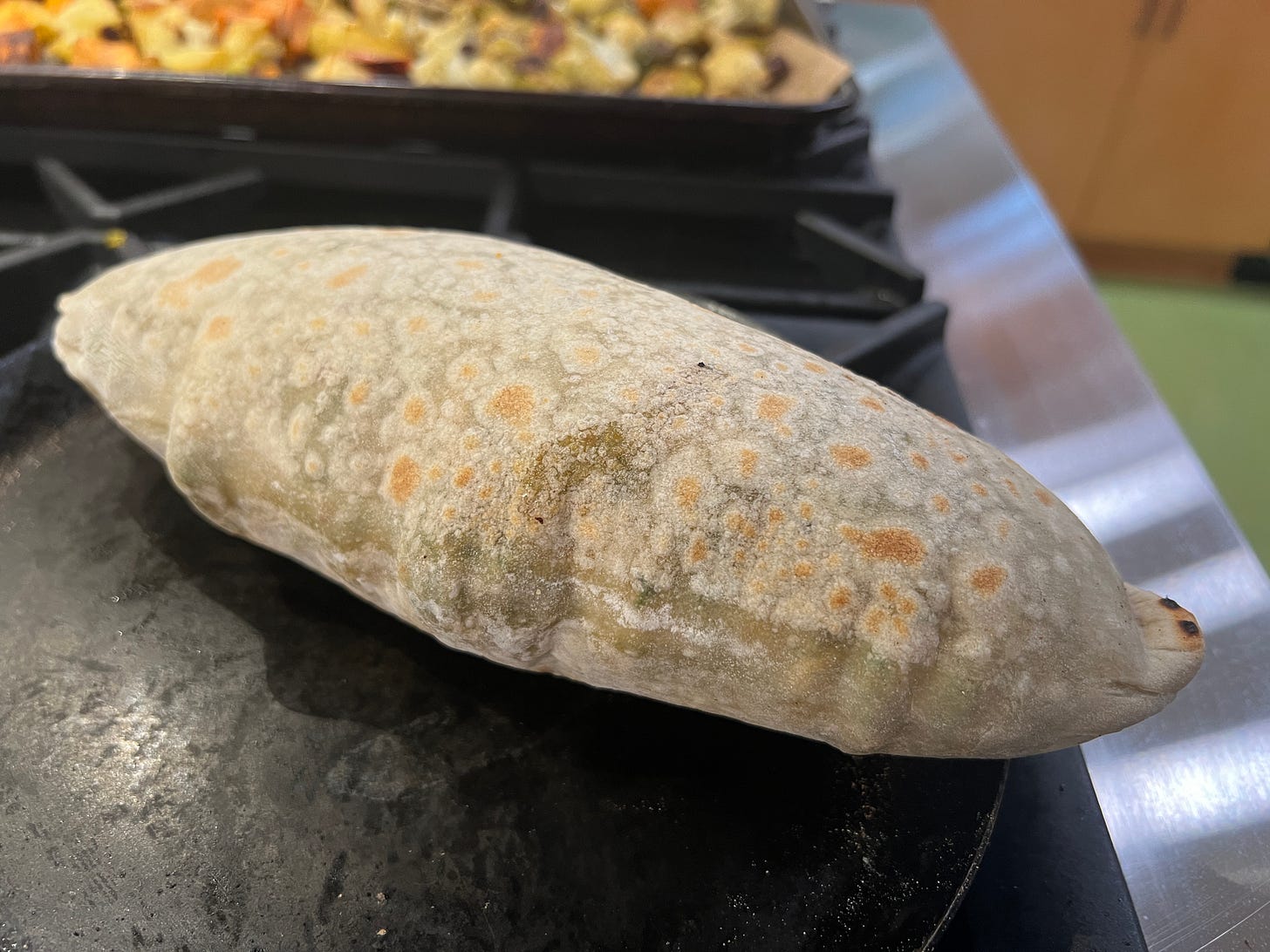It is the final days of Lent. Weeds blanket the neighborhood. And I have been thinking about the Hunger Gap.
Across the northern latitudes, the Hunger Gap was the precarious time when our ancestors’ food stores were emptying out and their spring crops weren’t yet ready to harvest. So many things could spoil the critical work each household had done to store enough calories to keep them alive until May. A rat infestation. A brigand raid. A fungus. Fire.
Even those who’d maintained enough carbohydrate stores – tubers, grains, salted meats – faced the threat of the Hunger Gap’s twin sister, what we now call vitamin deficiency. Well into the 20th century, the monotony of winter diets could lead to conditions like scurvy and pellagra (sometimes called the “springtime sickness”).
And so, in February and March, thousands of generations of our ancestors scrambled to find enough of the year’s first shoots to dispel sickness and prolong life. For the indigenous peoples of Oregon, that included wild celery and miner’s lettuce (a settler name, which Californians are replacing with the Ohlone word rooreh). In Appalachia, it might be pokeweed and creasy greens. For Northern Europeans: sorrel, wild mustard, nettles, and spruce tips.
Some say that the tradition of fasting for Lent was the Catholic Church’s way to smooth over the emotional pain of the Hunger Gap, to transform a looming tragedy into an act of moral will. (With no evidence to prove the link, this could be true, or it could be convenient.) In 21st-century Portland, living in a two-income household, I have no place talking about the Hunger Gap in spiritual or metaphorical terms. But people around the world have retained the pleasure of gathering these first spring greens, too.
In the Mediterranean and Caucasus, spring can mean rushing to gather fresh greens and herbs before the summer bakes the land. Soon-to-be-Portlanders Robyn Eckhardt and David Hagerman, authors of the cookbook Istanbul and Beyond, recently told me of their time in the villages of Eastern Turkey, where the residents would hike into the rocky hills to fill giant sacks with wild thyme and other herbs, which they would salt and pickle for the rest of the year.
In that spirit, I have spent the last week looking out for the most prolific wild greens in our midst: edible weeds. But I’ve also been asking a more basic question—what makes a plant a weed? In Weeds: In Defense of Nature’s Most Unloved Plants, the British nature writer Richard Mabey proposes one generous definition:
Weeds thrive in the company of humans. They aren’t parasites, because they can exist without us, but we are their natural ecological partners, the species alongside which they do best. They relish the things we do to the soil: clearing forests, digging, farming, dumping nutrient-rich rubbish. They flourish in arable fields, battlefields, parking lots, herbaceous borders. They exploit our transport systems, our cooking adventures, our obsession with packaging. Above all, they use us when we stir the world up, disrupt its settled patterns.
What I didn’t realize until I read Mabey’s book is that many of the weeds that plague modern Portlanders also plagued ancient Europeans. British settlers brought many of them—dandelion, chickweed, lambs-quarter, dock—to North America starting in the 16th century. Some weeds arrived in the sacks of grass and clover seeds that the colonizers shipped to this continent in order to feed their imported cattle and sheep.
Our grass lawns, in fact, are invasive species. Weeds have been elbowing their way into their midst, agitating for sunlight and nutrients, for millennia. To make an enemy of a weed, to see it as a plague to eradicate, is to impose a flawed, egocentric worldview onto a plant that merely flourishes in the world we have created.
If you’re going to fight against your anti-weed conditioning by eating a few, early spring is the time to do it, when many common weeds are at their mildest and most tender. After rereading John Kallas’s essential guide Edible Wild Plants — if you live in Portland, I’d encourage you to take one of his Wild Food Adventures foraging classes — I went looking for weeds. With nettles in mind, I first took a long hike along the Wildwood Trail in Forest Grove, but only found some Pacific waterleaf, which a Kallas class taught me to enjoy last year.
Most of the wild edibles I spot on my Arbor Lodge walks are on the side of busy roadsides, fumigated 24/7 by auto exhaust, or in the dog-pee zones alongside city sidewalks. So I emailed the organizers of the Overlook neighborhood’s Beach Community Garden, which is located a one-mile walk from my house. They allowed me to show up an hour before their spring work party last weekend so I could glean weeds from the pesticide-free gardens before the gardeners ripped out everything that remained.
A few of the raised beds housed thickets of chickweed, and I grabbed fistfuls of it, snipping off the top 3-4 inches. I gathered more judicious amounts of the lush, grand dandelions, just about to flower, and any of the rosettes of curly dock I came across. On my final loop, I spotted a dense stand of nipplewort, and filled up a bag of that, too. I brought my haul home, grabbing on my way up the steps some of the wild chives that grow alongside our driveway. (Native? Invasive? Can’t tell.)
All in all, it was a daunting amount of weeds, most of which I had never eaten before.
Rather than plunging in by making a giant salad, last night I bastardized Kate Leahy’s recipe for the Armenian herb-stuffed flatbread jinaglov hats, a specialty that traditionally contains dozens of foraged spring greens. I selected the tips of four cups’ worth of my haul—waterleaf, chickweed, dandelion, dock, nipplewort, wild chive—and washed them more than a few times. Then I chopped the greens finely, along with cilantro and dill, and cheated even further by tossing in a fistful of crumbled feta. I rolled out a thin round of unyeasted dough, mounded the herbs in the center, and pinched the ends together. Then I griddled the football-shaped pies in a cast-iron pan until steam puffed up the interiors and the exteriors blistered.
My cheater’s version of jingalov hats was, I confess, delicious. But feta and fresh herbs tend to make anything delicious. Earthy green flavors and hints of bitterness shot through the more familiar flavors of the ingredients I knew well. The wildness was held in check.
Another confession: I only ate one flatbread for dinner. A weed may be a human construct, mistakenly feared and loathed, but I am only human, with a human’s fears of food poisoning. I spent the rest of the evening listening to my gut.
The waves of nausea never hit. This morning, I woke up fine. Probably fine. Invulnerable, even? I’ll probably toss the leftover weeds into the compost bin, which is where they were originally destined. But I have one more jingalov hats in the refrigerator, to be reheated for lunch.
Other delicious things to gather right now
This week, the bigleaf maple trees are blooming! Make fritters (I just did!)
The latest-blooming ornamental cherries are about to blossom—salt-pickle them
Stinging nettles are at their peak, and you can even find them at the PSU farmers market










I'm imaging Christian's disgusted face as you ate those weeds and his knowing (maybe smug?) nod if you did get a belly ache. ;)
Fantastic! By the way, one of my former advisees who now works as a professional forager showed me a particularly egregious example of an AI-generated book on wild mushrooms that he purchased from Amazon to use as a cautionary prop. It was full of dangerous misinformation. These are now popping up all over the place, joining the many questionable gardening and foraging websites that the bots of churned out. Thank you for steering locals to a trusted teacher!